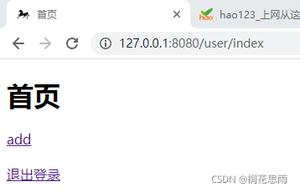[翻译] python Tutorial 之二

在上一篇中,简单介绍了IronPython的相关配置和控制台使用方面的内容,今天继续翻译接下来的内容。
Exercise 3: 加载 .NET 库
IronPython 仅能够直接引用一些最通用的 .NET 库。为了引用其它的 .NET 库, 需要显式引用.
IronPython维护着一个引用的列表 (请查看在 Task 1 的 clr.References). 为了添加.net 引用,使用
内置的“clr”模块方法:
clr.AddReference 用于直接添加.NET引用,或指定文件明或编译名称(完整或部分). 这个方法主要提供交
互性的控索(interactive exploration). 我们推荐在代码模块中,使用如下方法函数, 因为它们会对加载的编
译库提供更多的控制。
clr.AddReferenceToFile 添加对指定文件的引用,这个方法与加载的编译版本无关。最后, 它不确保正确
的编译版本被加载。为了确保加载正确的编译版本, 请使用 clr.AddReferenceByName. 而且AddReferenceToFile
要求编译(库)直接定位在sys.path的路径列表下.
clr.AddReferenceToFileAndPath 提供与AddReferenceToFile相似的功能. 不同之处在于它接受绝对
路径。并且在加载之前,AddReferenceToFileAndPath 会添加文件路径到sys.path.
clr.AddReferenceByName 添加对指定完整assembly名字的引用。比如:
'System.Xml, Version=2.0.0.0, Culture=neutral, PublicKeyToken=b77a5c561934e089'.
clr.AddReferenceByPartialName 添加对指定“部分”的assembly名称的引用. 这个方法不确保被加载的
assembly版本正确。使用 clr.AddReferenceByName 添加对指定版本的引用.
Task 1: 添加 System.Xml 引用
在tutorial路径下启动 IronPython 控制台 (see Introduction for details).
为了引用 System.Xml, 首先要引用 Xml 组件到 IronPython. 使用下面代码来添加 System.Xml
引用(您可在敲入"clr.References" 之前或之后,添加 clr.AddReference 代码看一下其中的变化):
import clr
clr.AddReference("System.Xml")
from System.Xml import *
dir()
注意clr.AddReference 函数即接受 System.Reflection.Assembly 对象,也接受“字符串”做为参数. 符串
可以是一个完整的编译名称,部分名称或文件名. 为了对对编译引用施加更多的控制, 可适当引用上述函数.
例如, 考虑如下的交替声明,对应上面的clr.AddReference("System.Xml"):
clr.AddReferenceByName('System.Xml, Version=2.0.0.0, Culture=neutral, PublicKeyToken=b77a5c561934e089')
clr.AddReferenceByPartialName("System.Xml")
加载XML文件"load.xml" 到 XmlDocument. 这个 xml 文件包括IronPython 示例游戏"Puzzle" 的保存
数据。为清楚起见,load.xml 文件被放置在Tutorial 路径下
d = XmlDocument()
d.Load("load.xml")
我们可以查询该文档。使用如下代码查询保存的“游戏”(数据):
n = d.SelectNodes("//Puzzle/SavedGames/Game/@caption")
for e in n: print e.Value
The output in the console window will be:
>>> n = d.SelectNodes("//Puzzle/SavedGames/Game/@caption")
>>> for e in n: print e.Value
...
Seattle (default game)
New York
World
North America
(选项) 引用 "xmlutil.py" 模块放在Tutorial 路径下,然后使用模块方法来遍历Xml 文件的内容:
import xmlutil
for e in xmlutil.Walk(d): print e.Name, e.Value
#document None #comment ************************************************************************* * * Copyright (c) Microsoft Corporation. * * This source code is subject to terms and conditions of the Microsoft Public License. A * copy of the license can be found in the License.html file at the root of this distribution. If * you cannot locate the Microsoft Public License, please send an email to * ironpy@microsoft.com. By using this source code in any fashion, you are agreeing to be bound * by the terms of the Microsoft Public License. * * You must not remove this notice, or any other, from this software. * * * *************************************************************************** Puzzle None SavedGames None Game None caption Seattle (default game) type a y 714 x 327 level 11 dimension 3 Game None caption New York type r y 1538 x 1205 level 12 dimension 3 Game None caption World type h y 0 x 0 level 2 dimension 4 Game None caption North America type a x 2 y 5 level 4 dimension 3 TopLeftPreviewTile None x -3 y -3 dimension 3 level 5 Cache None allow true
遍历方法是一个生成器[generator] (Python 方法包含 "yield" 声明). 在遍历方法执行时, 它逐个返回(yields)
XML 结点数据给调用者[caller]. 遍历代码如下:
def Walk(xml):
yield xml
if hasattr(xml, "Attributes"):
attrs = xml.Attributes
if attrs:
for attr in attrs:
yield attr
for child in xml:
for c in Walk(child):
yield c
按下Ctrl+Z 或 F6 回车键退出python 控制台。
Task 2: Mapack - 加载.NET 库 - AddReferenceToFile
这个任务要求 Mapack.dll 库来进行线性代数运算(linear algebra computations). 这个库并不是IronPython
发布的一部分. See prerequisites for download details.
启动tutorial 路径下的IronPython 控制台.(see Introduction for details).
使用 clr.AddReferenceToFile 函数加载矩阵[Matrix]库 "Mapack.dll":
import clr
clr.AddReferenceToFile("Mapack.dll")
from Mapack import *
dir()
控制台显示如下输出:
>>> import clr
>>> clr.AddReferenceToFile("Mapack.dll")
>>> from Mapack import *
>>> dir()
['CholeskyDecomposition', 'EigenvalueDecomposition', 'LuDecomposition', 'Matrix', 'QrDecomposition',
'SingularValueDecomposition', '__builtins__', '__doc__', '__name__', 'clr']
创建 Matrix 类实例:
m = Matrix()
哦(Oops), 错误的构造函数参数. 下一步您将会了解构造函数的有效方式.
Traceback (most recent call last):
File , line unknown, in Initialize##30
TypeError: Matrix() takes at least 1 argument (0 given)
使用__doc__ 属性, 查看关于Matrix 构造函数的信息:
print Matrix.__new__.__doc__
>>> print Matrix.__new__.__doc__
__new__(cls, int rows, int columns)
__new__(cls, int rows, int columns, float value)
__new__(cls, Array[Array[float]] value)
通过正确的使用构造函数,并手工正确的设置矩阵数据来创建Matrix 类实例。IronPython 支持.NET类
自定义索引[custom indexing].
m = Matrix(2, 2, 1.2)
n = Matrix(2,1)
n[0,0] = 4
print m
print n
>>> m = Matrix(2, 2, 1.2)
>>> n = Matrix(2,1)
>>> n[0,0] = 4
>>> print m
1.2 0
0 1.2
>>> print n
4
0
(可选项) IronPython 也支持操作符重载. 矩阵重载操作符+, - (二进制和一元) 和 *. 您能看到操作符
表示 (__add__, __mul__, __sub__, ...) :
dir(m)
简单的矩阵复数(matrices)运算:
m * n
n.Transpose() * m
m * 3
n + -n
控制台显示如下输出:
>>> m * n
Mapack.Matrix
>>> n.Transpose() * m
Mapack.Matrix
>>> m * 3
Mapack.Matrix
>>> n + -n
Mapack.Matrix
TypeError: Matrix() takes at least 1 argument (0 given)
按下Ctrl+Z 或 F6 回车退出 Python 控制台
Exercise 4: 获取和使用Python 标准库
在这个练习中,您将获取并指向 Python 标准库.
Task 1: 配置IronPython ,使用Python 标准库
从 http://www.python.org/download/ 下载最新的Python (安装包)installer 并进行安装. 其余的练习
将假设您已使用默认设置(比如:安装到c:"python25).
创建一个文件,将其命名为"site.py" 。然后将它放在IronPython "Lib" 路径下. 如果它已经存在, 您
需要编辑它. "site.py" 文件会在每次运行 IronPython 时运行. 告之IronPython (Python)标准类库所在位
置。您可以添加Python的"lib"路径到IronPython 的路径下. 这样做了之后,将下面代码敲入到"site.py" 文件
。(用实际路径替换 “c:"python25"lib” 路径):
import sys
sys.path.append(r"c:"python25"lib")
在tutorial路径下启动python控制台.(see Introduction for details).
现在您可以在IronPython使用 Python 标准库, 比如获取当前的工作路径 (output uses assumed location
of your IronPython installation):
import os
os.getcwd()
'C:""ironpython""Tutorial'
Tutorial (阶段)总结:
在这部分tutorial 中您已进行了如下练习.
IronPython 交互控制台
在IronPython中使用标准.net类库
加载.NET 库
获取并使用Python 标准类库
在本tutorial中, 您已熟悉了IronPython 交互控制台, 包括使用dir()方法动态控索(dynamic exploratory)。
并且使用“__doc__” 属性显示环境. 您也了解了在IronPython中加载和引用.NET 库 (使用引用声明), 创建.NET
类实例(包括泛型类), 调用方法,遍历.NET 集合, 以及重载 .NET 对象重载操作符. 最终, 您还了解了如何访问标准
Python 类库。
好了,今天的内容就先到这里了(其实到这里,还有一半内容)。
在下一篇中,将会介绍IronPython 高级篇(Advanced )。
以上是 [翻译] python Tutorial 之二 的全部内容, 来源链接: utcz.com/z/386781.html





